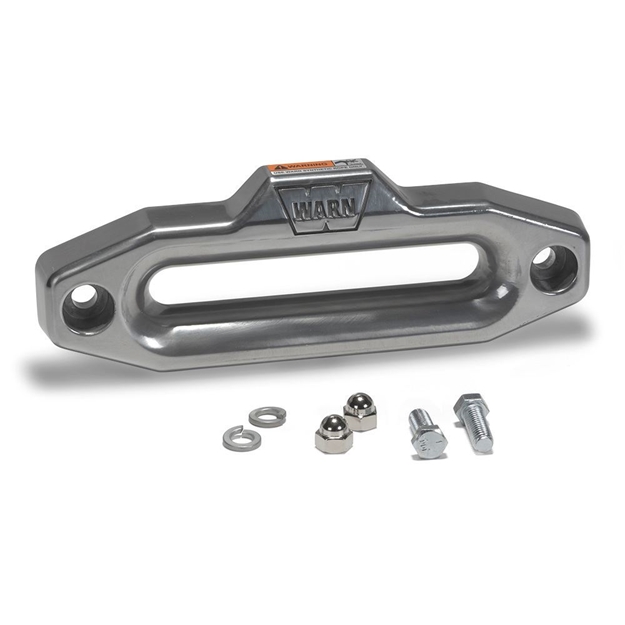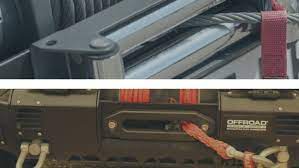First of all, fairlead is a great component and comes in handy in multiple applications like winches and boat anchor rigging.
A fairlead can be used to divide and minimize the tension in the wire cable.
Roller fairlead and hawse fairleads are common types used in relative applications.
There’s a difference in working, but the use is the same as both of these fairings minimize the tensile strength of wire cable.
Hawse Fairlead

A hawse fairlead usually consists of four small gears or pins fixed to the hull with bolts or clips.
Each gear has its bearings which rotate around a circular fixed shaft called the bullseye.
One end of the cable runs over a sheave mounted on the fixed shaft.
While the other end passes through the hawse fairlead and goes through a different sheave attached to the bullseye.
This means that when the ship’s helm is adjusted.
The line tightens as the vessel swings toward or away from the current direction.
It reduces the need for constant adjustment of the mainsheet, although there are several other methods for varying the tension on the sheet.
The large brass drums at the ends of the lines may also be hauled up or down to alter the tension on the line.
Roller Fairlead

Roller Fairlead is another type of fairlead that works by sliding one part of the sheave across the sheave surface.
Thus altering the line’s angle at which the line runs over the drum.
These are commonly used on vessels where heavy running rigging was needed.
Especially when it was impractical to install winches on deck.
A more modern version of this type of fairlead uses hydraulic cylinders instead of springs to push or pull the roller against the sheave.
This system provides smoother action than spring-loaded rollers, but they can be damaged if operated incorrectly.
They also require an operator who knows how to adjust the pressure correctly.
And one who knows how to safely move around in the bowels of a ship while adjusting them.
Difference Between Roller Fairleads and Hawse Fairleads
Roller fairleads work with any Winch or hauling system but can only handle moderate loads.

And must be well-secured to function properly.
In contrast, hawse fairleads work only with mechanical winches and must be firmly secured to function properly.
Hawse fairleads must be firmly secured on deck because they are used for moving sails around in windy conditions.
If a hawse fairlead were not secured properly, it could slide off the side of the vessel and cause severe damage.
This is why many people assume that roller fairleads are less secure than hawse fairleads.
However, if you’re talking about sailboat hardware, you’re probably talking about hawse fairleads.
The force needed to break through a hawse fairlead will generally be far greater than that needed to force through a roller fairlead.
Difference Between Fairleads According To Bearings Types
There are several important differences between roller fairleads and hawse fairleads due to differences of bearing types, including:

Roller fairleads typically use bearings either with antifriction or tapered roller bearings.
Tapered roller bearings have high compressive strength and require little lubrication.
In contrast, tapered roller bearings have low compressive strength and require periodic lubrication.
Antifriction bearings do not need lubrication but do need periodic maintenance.
Hawse fairleads typically use bronze bushing roller bearings with lower compressive strength than either antifriction or tapered roller bearings.
However, these bearings do not require lubrication and have excellent self-lubricating properties.
Bronze bushing roller bearings also have excellent wear resistance and good load-carrying capacity.
A third type of bearing commonly used in hawse fairleads is an all-ball bearing.
Ball bearings have very low compressive strength and very high radial loads.
Thus, ball bearings are often the last component of a hawse fairlead before the mast is cut into the vessel.
The reason for this is that if a ball bearing breaks or comes loose.
The boat can continue to sail under bare poles until the problem is corrected.
The mainstays will likely catch a broken or loose ball bearing, making replacement easy.
In contrast, ball bearings used in roller fairleads must be frequently lubricated with grease or oil to ensure proper functioning.
Grease is more effective than oil for reducing friction between ball bearings.
But it does not carry out as well as oil when protecting water and contaminants.
Therefore, frequent greasing of ball bearings in roller fairleads is essential.
Difference Between Fairleads Tensile Minimizing Capacity
Hawse fairlead, as compared to roller fairlead, has a higher tensile stress value due to heavy axial loading from sheaves & different sized propellers and shaft diameters.
So their minimizing capacity will be very less as compared to roller fairlead.
But Hawse fairlead’s material has higher elasticity modulus value than that of roller fairlead.
So, its reducing capacity will be more than roller fairlead.
And in addition to this, there is no minimum/maximum support on them like that of roller fairlead.
Hence no interference would be experienced during operation & increasing rotation speed & reducing downtime.
Hence Roller fairlead has greater tension-reducing capacity than Hawse fairlead.
In case of disconnection or worn parting, it may give an overloading effect due to rotational movement.
It can cause vibration and shock, which can create structural damages on this kind of system.
Quick Summary
In comparing both types of fairlead, either type can be chosen according to requirements, each type of fairlead possesses.
And all kinds of advantages. Still, one should choose based on features and disadvantages.
So at this moment, concluding this section, I am pretty sure you would get an idea about the selection of either Hawse fairlead or roller fairlead.
In winches, boat rigging, and anchoring system.
Video Guide
Also Read
- One-Way Motorcycle Adventure to Anchorage In 2023
- Painting ATV plastic with Krylon fusion? – Complete Guidances In 2023!
- What Happens If You Get Caught Riding An ATV On The Road? – Explore The Consequences!
- Suitable ATV for a Really Big Guy – Must Consider This Information
- ATV Accelerating Without Giving It Gas – Facts One Must Know In 2023!
